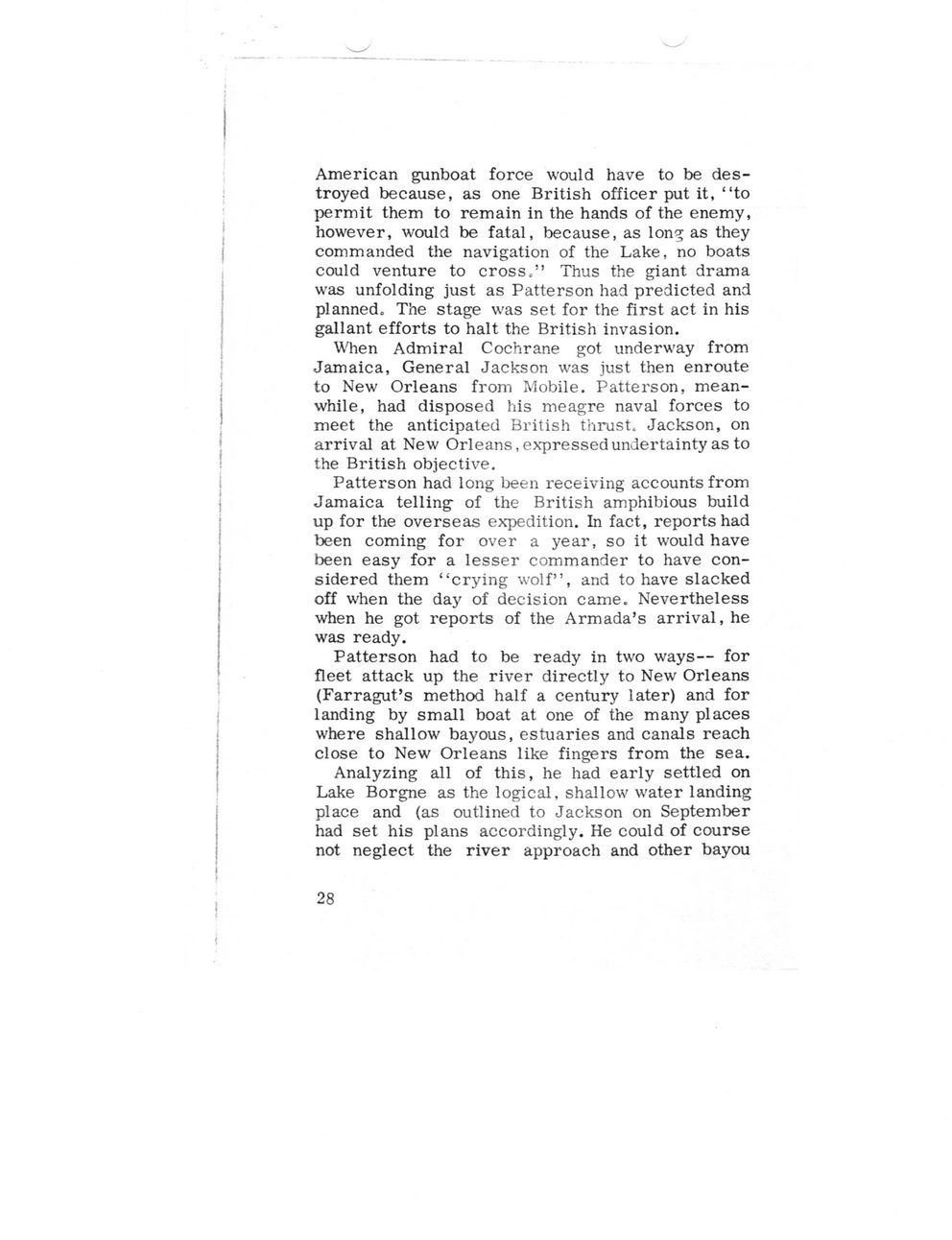This text was obtained via automated optical character recognition.
It has not been edited and may therefore contain several errors.
American gunboat force would have to be destroyed because, as one British officer put it, ?to permit them to remain in the hands of the enemy, however, would be fatal, because, as lon^ as they commanded the navigation of the Lake, no boats could venture to cross.? Thus the giant drama was unfolding just as Patterson had predicted and planned. The stage was set for the first act in his gallant efforts to halt the British invasion. When Admiral Cochrane got underway from Jamaica, General Jackson was just then enroute to New Orleans from Mobile. Patterson, meanwhile, had disposed his meagre naval forces to meet the anticipated British thrust. Jackson, on arrival at New Orleans,expressedundertainty as to the British objective. Patterson had long been receiving accounts from Jamaica telling- of the British amphibious build up for the overseas expedition. In fact, reports had been coming for over a year, so it would have been easy for a lesser commander to have considered them ?crying wolf?, and to have slacked off when the day of decision came. Nevertheless when he got reports of the Armada?s arrival, he was ready. Patterson had to be ready in two ways? for fleet attack up the river directly to New Orleans (Farragut?s method half a century later) and for landing by small boat at one of the many places where shallow bayous, estuaries and canals reach close to New Orleans like fingers from the sea. Analyzing all of this, he had early settled on Lake Borgne as the logical, shallow water landing place and (as outlined to Jackson on September had set his plans accordingly. He could of course not neglect the river approach and other bayou 28

Battle of 1814 P28